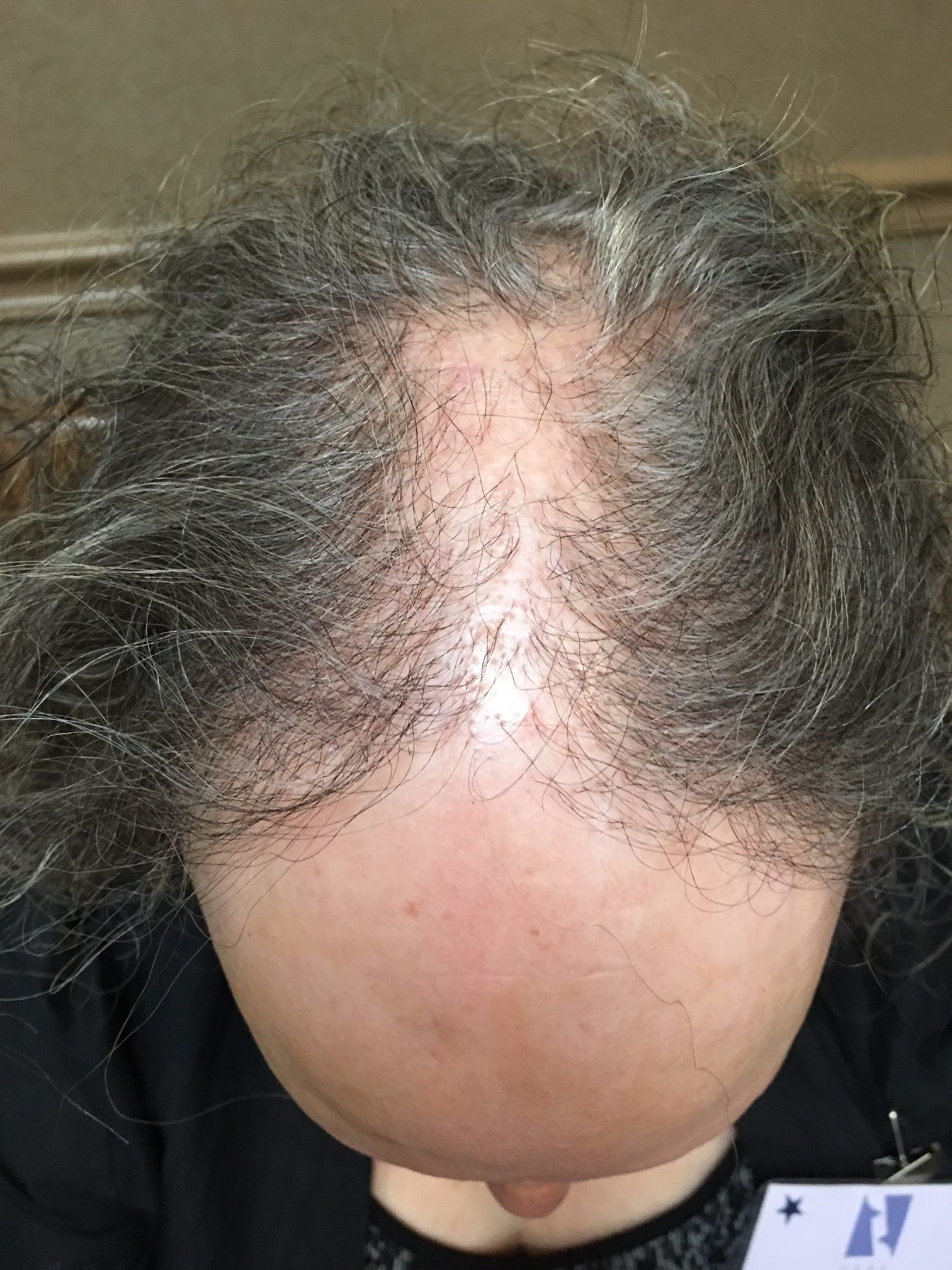COULD YOUR CLIENT’S HAIR LOSS BE ALOPECIA?
How To Help Your Client With Alopecia
Hair loss is one of the scariest experiences for a client to navigate and also one of the trickiest issues to troubleshoot. Our job consists of many elements, but hair and scalp health are where it all starts. September is National Scarring Alopecia Month and if this is not a topic you are well-versed in, no worries. We did a deep dive for you. Scroll through for the key things you need to know, from recognizing these conditions to treating them.
What is scarring alopecia?
Scarring alopecia, or cicatricial alopecia, refers to a group of disorders that damage the hair follicle and replace it with scar tissue. This process leads to permanent hair loss. These disorders are classified as either primary or secondary.
In primary cicatricial alopecia, the hair follicle is the main target of destruction. In secondary cicatricial alopecia, the hair follicle is destroyed as a result of an external injury or process, such as burns, radiation, tumors, or infection. Below are some of the most common conditions and how to recognize, treat, and talk to your clients about them.
Lichen Planopilaris
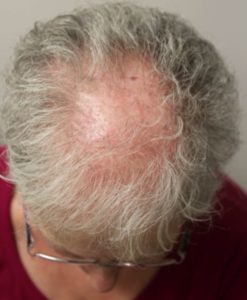
Who is affected?
Caucasian women
What causes it?
This is an autoimmune condition that occurs when immune cells attack skin and hair follicles.
What does it look like?
Most commonly this condition presents as patches of hair loss often accompanied by redness and scaly skin. Sometimes, but not always, it can affect the hairline and eyebrows.
How is it treated?
The best way to help a client with this condition is to refer them to a dermatologist as this condition often requires medical treatment such as topical steroids, scalp injections, or oral medication.
Dissecting Folliculitis

Who is affected?
Young adult black men
What does it look like?
This variation of alopecia forms multiple firm nodules on the back of the scalp and the nape of the neck. These nodules sometimes drain pus and create patchy hair loss.
How is it treated?
Because this condition is typically asymptomatic and in the back of the head, clients might not always know it is there. It is important to let the client know you have noticed it and refer them to a dermatologist for further treatment.
Central Centrifugal Cicatricial Alopecia (CCCA)
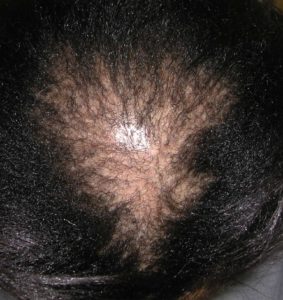
Who is affected?
Black women of African-descent
What does it look like?
This first presents as breakage primarily in the crown and then progresses to a shiny patch of hair loss that expands outwards.
What causes it?
The cause of CCCA is unknown, but it has been known to affect several family members, suggesting a genetic component could be at play. Traction styling, such as braids and sew-ins, is known to exacerbate this condition.
How is it treated?
Besides occasional itching and pain, this condition generally goes unnoticed. If you spot this on your client’s scalp, refer them to a dermatologist for further treatment, which can include a scalp biopsy to determine what is necessary.
Folliculitis Delcavans
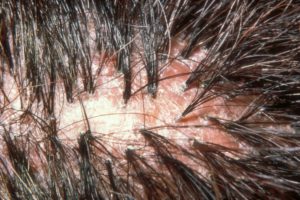
Who is affected?
All genders, ages, and races
What does it look like?
Folliculitis Delcavans causes itchy redness, crusting, and painful pustules around the remaining hairs and there can often be multiple hairs growing from one follicle.
What can you do?
One of the more uncomfortable variations of cicatricial alopecia, folliculitis delcavans is best treated by a dermatologist and usually requires further management.
Discoid Lupus Erythematosus
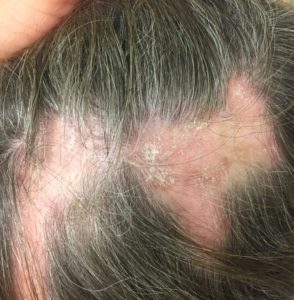
Who is most commonly affected?
Women of all ages and races
What does it look like?
This itchy and painful variation of CA forms circular patches of hair loss with redness or areas of irregular pigmentation. Sometimes, lesions inside the ears form as well.
Why causes it?
This variation is an autoimmune condition that creates a scarring rash on skin involved with sun exposure.
What can you do?
Because this condition is linked to sun exposure, adequate sun protection is important. This condition can also involve internal organs and may require oral medication to prevent progression. As with all other variations of CA, referral to a dermatologist for further testing is the best action you can take to help your client.
Traction Alopecia
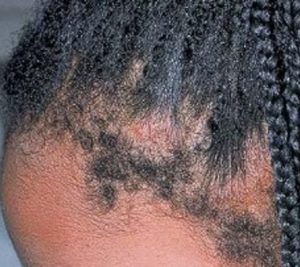
Who is most commonly affected?
African-American girls and women, athletes and professions that require repeated and prolonged pulled-back hair
What does it look like?
Patch hair loss along the hairline and temples
What causes it?
Traction alopecia is caused by repeated traumatic styling, including braids, curlers, tight buns or ponytails, and extensions. Over time, it can cause itchiness and mild pain, and hair loss becomes permanent with excessive traction.
How is it treated?
The best way to treat this form of alopecia is to minimize all sources of stress on the hair. This includes thermal, chemical, and traction sources. If hair loss looks permanent, refer your client to a dermatologist for further management
For an entire list of alopecia conditions, click here.
What role do hairdressers play in clients with alopecia?
There are very few people in a client’s life who see their scalp so up close and personal. Because of this, we really are their first line of defense when it comes to awareness and ultimately treatment. Here are a few ways to show up for your clients struggling with hair loss:
Be informed.
It is up to us to be informed and recognize irregularities because not only could it save someone’s life, but ultimately the success of all services we provide depends on the health of the hair and scalp. There is also no better way to connect with a client than to go the extra mile and be able to help them through a tough time. Not sure where to start? Click here to take Centrifugal Alopecia Research Foundation’s FREE Hairloss Certification Course.
Make your client feel more comfortable.
A lack of awareness and information combined creates a stigma around scalp and skin conditions. This can lead a client to be embarrassed or uncomfortable about their condition being seen or addressed in a public setting. Try offering your client an appointment during slower hours or in a private area of the salon.
Proceed with care.
Scalp conditions can create sensitive and painful skin so a little extra care goes a long way. Choose products without harsh ingredients or irritating fragrances, use lukewarm or cool water as it can soothe the scalp, and be sure to comb with caution as not to create any more traction.
Create a plan.
There is something therapeutic about taking back control when it comes to hair loss. Let your clients know what they can do to help prevent further hair loss if possible. Even though there isn’t always a clear-cut solution, recommending products to your client to keep the hair that they have healthy is still important. Products for thinning hair, volume, sensitive scalp, and strengthening are a good place to start. Encourage your client to seek a dermatologist for any medical or further treatment. If your client needs help finding an experienced physician, they can fill out this form for CARF’s list of physician referrals.



